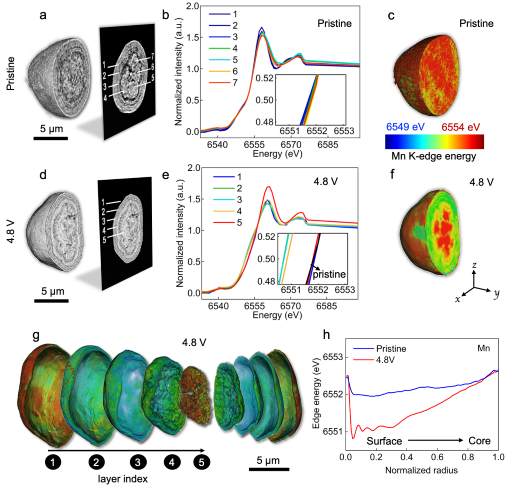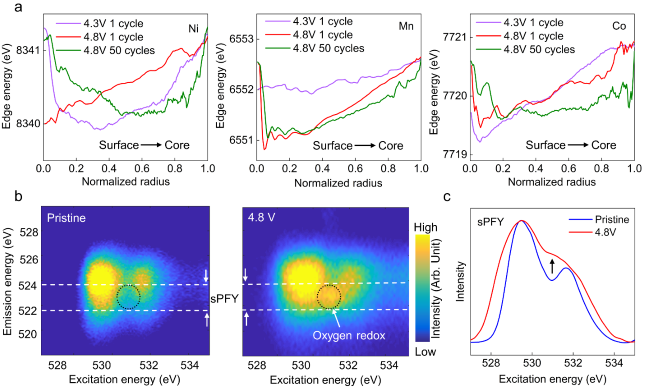Study Reveals Depth-dependent Valence Stratification in Lithium-rich Layered Cathode Using a Synchrotron Radiation-based Technique
An international research team has used synchrotron-based nano-resolution spectro-tomography to study a typical lithium-rich nickel-manganese-cobalt (LirNMC) material (i.e., Li1.2Ni0.13Mn0.54Co0.13O2) to visualize its multi-layer morphology and the chemical and spatial dependence of oxygen redox behavior. This research, which was recently published in Nature Communications, reveals that the oxygen redox induces the depth-dependent transition metal valence stratification in LirNMC.
The team consisted of scientists from the Beijing Synchrotron Radiation Facility at the Institute of High Energy Physics (IHEP), the Stanford Synchrotron Radiation Light Source at SLAC and Brookhaven National Laboratory.
As a high-efficiency energy storage device, the Li-ion battery is widely used in electronic devices and electric vehicles. The research community has devoted great effort to improving electrochemical performance. The LirNMC layered cathode is one of the promising candidates for the Li-ion battery because of its higher energy density. However, it suffers from voltage decay upon cycling. To overcome this problem, it is necessary to understand the mechanism for this voltage fade.
In this work, the team used nano-resolution spectro-tomography to study the LirNMC material at the particle level in three dimensions. This allowed visualization of the material’s unique multi-layer morphology with homogeneous composition, and the charge-induced depth dependence of the transition metal valence distribution.
The soft x-ray resonant inelastic x-ray scattering (RIXS) and super partial fluorescence yield (sPFY) results clearly showed features of oxygen redox in the charged sample (4.8V in the first cycle). Although oxygen activity can increase the capacity of the cathode, it will generate oxygen vacancy around the transition metal cations and decrease their valences. This is why the transition metal valence of LirNMC has a very different depth profile from that of conventional NM in the charged state.
This study highlights the importance of material engineering at the particle level and a depth-dependent compositional engineering strategy, which could be a viable way to solve the voltage fade problem in LirNMC cathodes.


Contact Information
Mr. GUO Lijun
ljguo@ihep.ac.cn